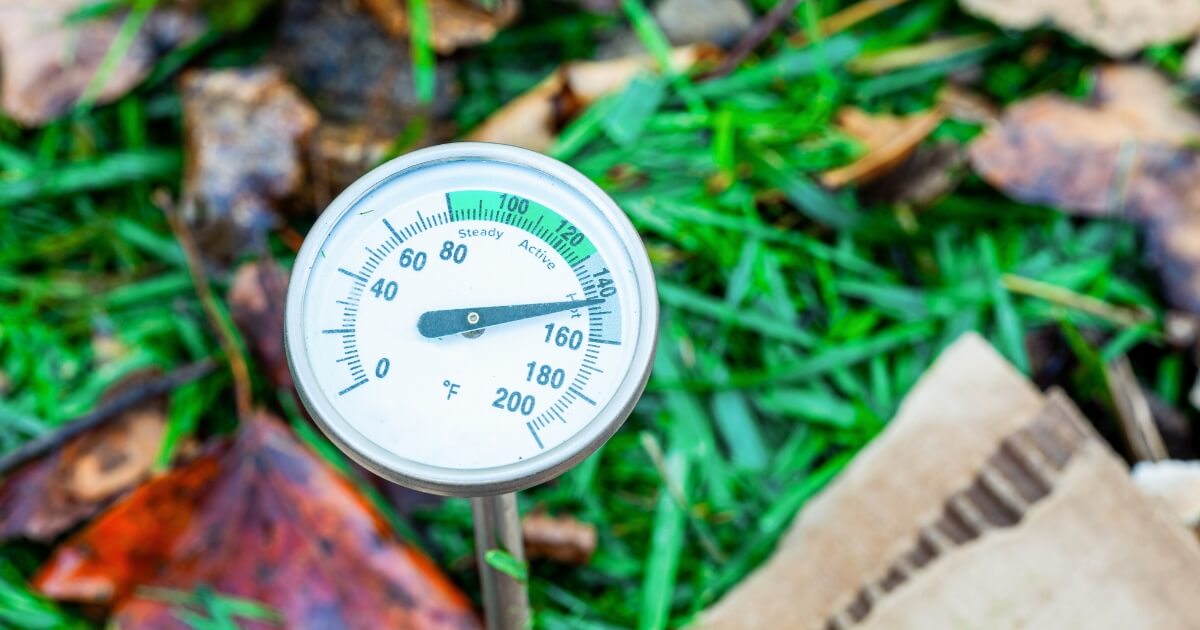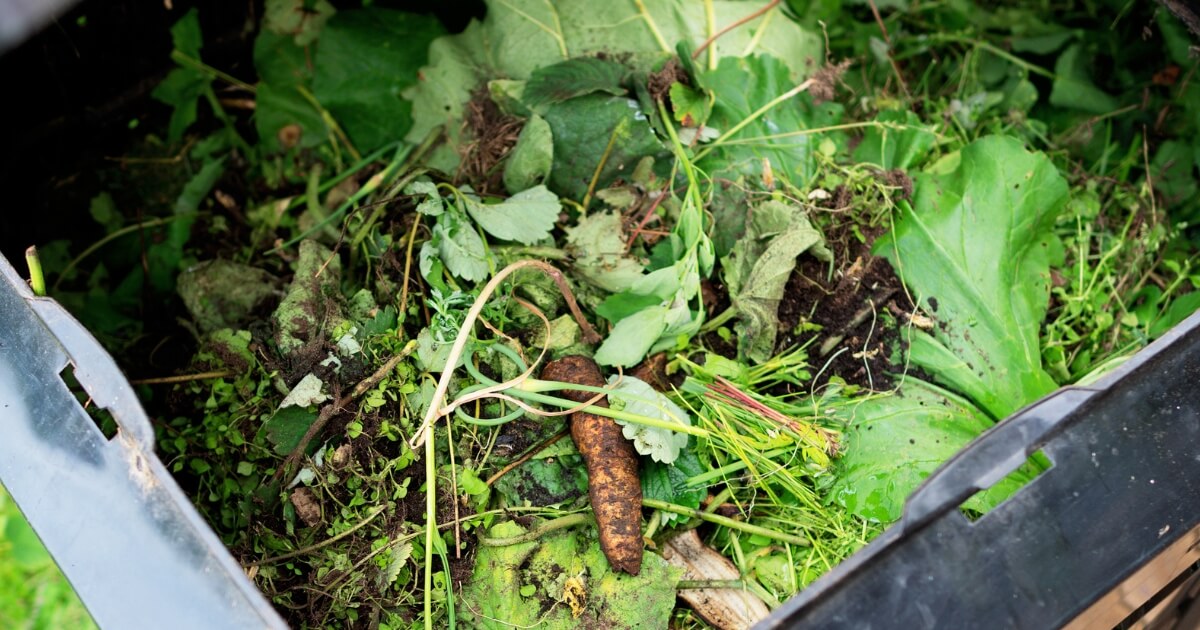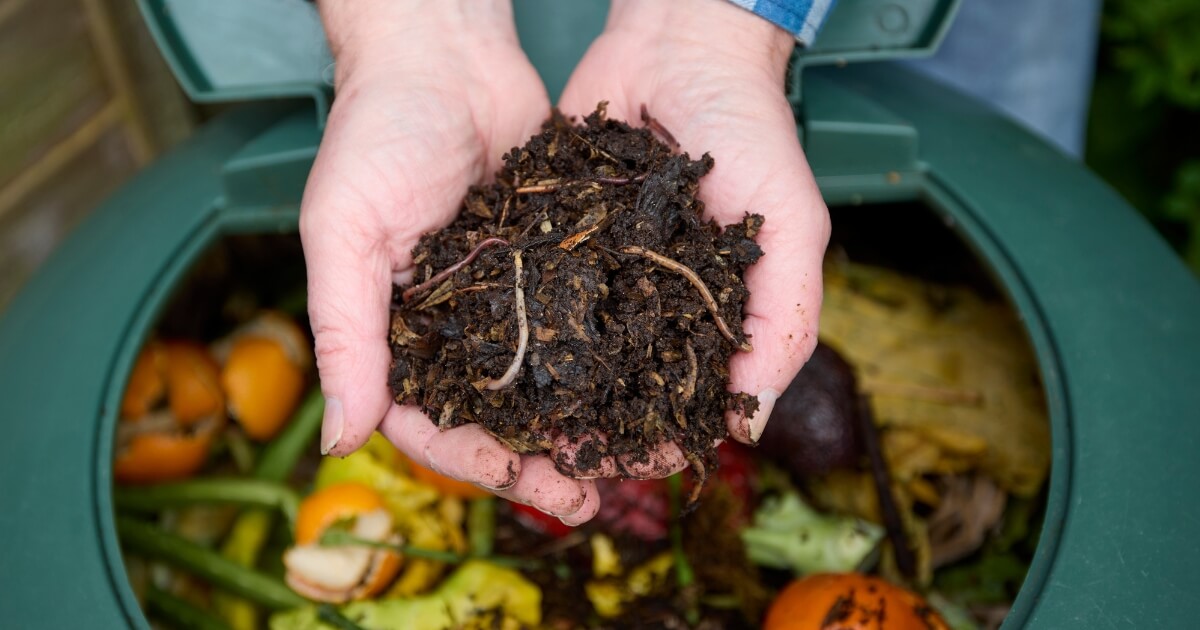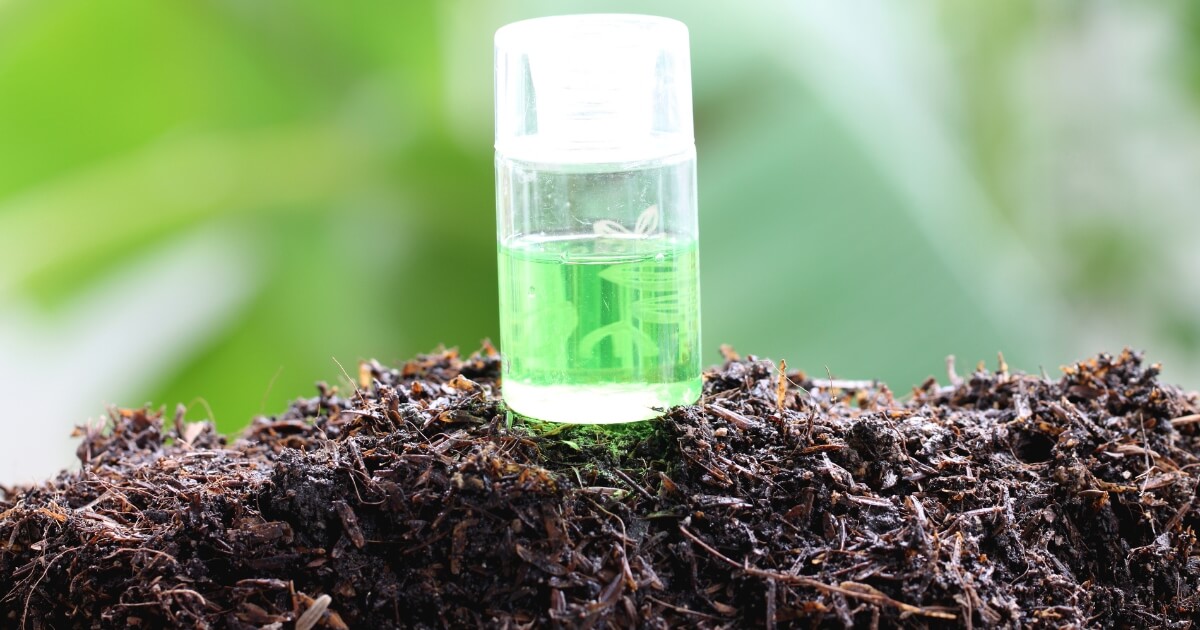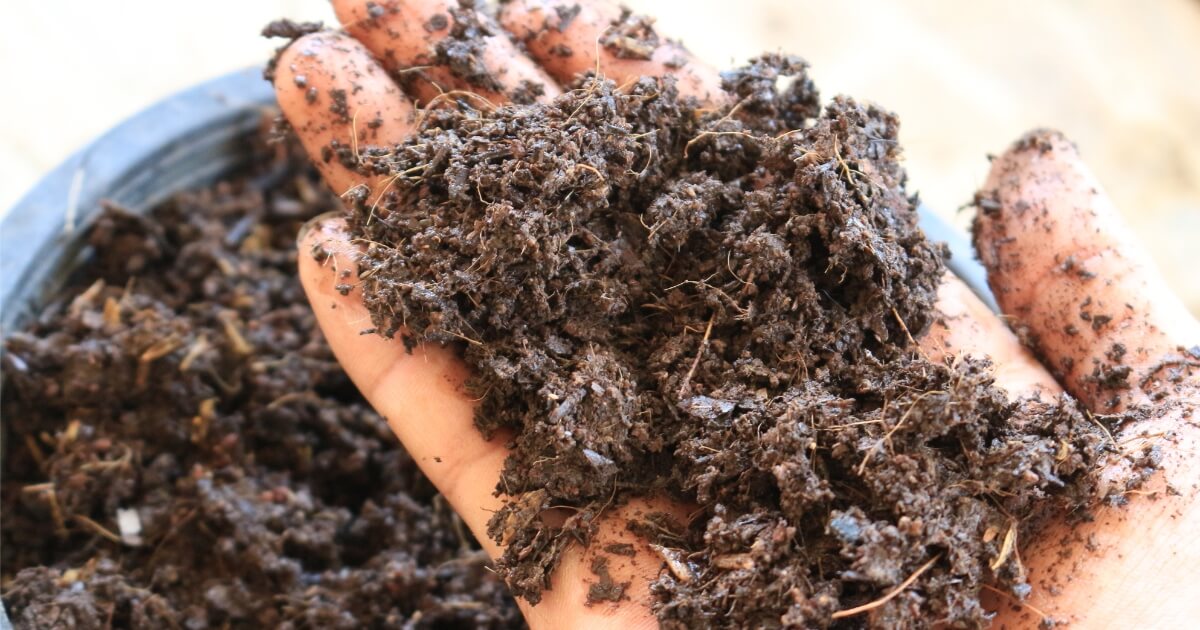If you have a compost pile or are considering starting one, a compost aerator is a must-have garden tool.
Why? Take it from me, straining your back trying to turn your compost pile with a shovel or pitchfork to allow airflow is no fun at all!

So what compost aerator should you buy?
If I had to choose, the Lotech Products Crank Compost Aerator for overall effectiveness and ease-of-use takes my top pick.
For those who find that model out of their budget range, I’d take a good look at the Fiskars Steel Tiller, which is a sturdy workhorse for mixing up that compost.
In this guide, I review the top five best compost aerators on the market, discuss why you need this tool, and point out the things you need to look out for.
Our answers to frequently asked questions about compost aerators will help you purchase with confidence!
Top 5 Best Compost Aerators
1. Lotech Products Compost Crank Compost Aerator

Things we like:
- Pulls up compost from the bottom of the pile for optimal aeration
- Durable construction top to bottom for years of use
- Lightweight
- Fits into all size piles and bins
- Easy to operate for any age/strength level
Things we don’t like:
- Pricey
- Can’t be used for other garden tasks like tilling
The Lotech crank compost aerator is fantastic for those who don’t want to strain while tending to their compost pile.
The combination of a tall shaft, the corkscrew tine, and the easy-crank handle make using this tool a breeze. The nearly effortless operation makes it perfect for just about any person, no matter what their physical condition.
The glass-filled nylon handles can spin the corkscrew down to a maximum depth of 29-inches, which is sufficient to aerate deep into your compost pile. The spiral tine design cuts through even troublesome thick compost materials and pulls free cleanly.
The cranking motion of the Lotech aerator makes it the most user-friendly of the bunch.
I place it at number one, even though it has a higher price point. It should do a wonderful job grabbing and lifting a respectable amount of compost so air and moisture can penetrate.
2. Fiskars 40-Inch Long Handle Steel Tiller

Things we like:
- The long shaft means no bending or straining
- Arrow-tip tines break up compost materials quickly and easily
- T-shape handle provides a comfortable grip and turning leverage
- Affordable for people with small garden budgets
Things we don’t like:
- Some manufacturing batches have rounded tips instead of pointed
- Tines are not as heavy-duty as the handle and could bend or break under excessive use or weight
The Fiskars long-handle steel tiller gets top marks for sheer durability.
The hardened-steel tines weld to the long steel shaft, which provides a stable turning and aerating tool that can handle even dense compost piles. The steel also does not bend, as you may find with a wood or fiberglass shaft.
I appreciate the platform to place your foot so you can apply more pressure to cut deeper into the compost pile before twisting the handle. You can also use this tool to break garden topsoil before planting season.
I give the Fiskars tiller the number two spot since it reliably turns and aerates average-size compost piles with less effort than other models.
The design of the tines grabs and fluffs an ample amount of material at one time, so you can quickly finish tending to your pile. The steel construction is long-lasting, which makes this a very cost-effective tool.
3. Bosmere 36-Inch Compost Aerator

Things we like:
- Steel material won’t rust
- The handle can be adjusted for right or left-hand use
- The shaft is long enough for aeration to most pile depths
- Blades have serrated edges that aid in breaking up compacted compost
Things we don’t like:
- The blunt end makes it difficult to penetrate dense compost material
- Need some strength to pull the tool up through overly wet or deep piles
- Need to oil the wings to keep them functioning properly
The Bosmere compost aerator features a unique handle grip design that is very comfortable to use, especially if you have a large compost pile to tend.
This plunger-style aerator has two levels of “wings” that slide into the pile in the closed position to the depth you desire.
When you pull up on the handle, the wings open up, which creates pockets for air and moisture to penetrate.
I like the rust-resistant steel material that will maintain it’s appearance. The padded handles provide better grip, control, and comfort during use.
I make the Bosmere compost aerator a third-place choice for its less-strenuous plunging motion. This model is good for those who want a quick way to aerate their pile without having to turn the whole thing.
For better operation, consider sharpening the end of the shaft into a point, which makes cutting into dense compost easier.
4. Garden Weasel Garden Claw Pro (38-Inch)

Things we like:
- Adjustable tines, to grab as much or as little compost as necessary
- Long shaft to prevent stooping or bending during use
- A handy platform for your foot when you need extra pressure
Things we don’t like:
- A bit pricey
- Claws are made of an alloy that is prone to snapping
- Instructions for use are lacking
The Garden Weasel compost aerator features adjustable tines, which is ideal for those who have many sizes of compost piles or need to turn compost within a bin with limited space.
The length of the shaft is long enough for the average-size person to remain fully upright while turning their compost, which reduces back strain.
The carbon-steel construction is durable, and if you accidentally leave it outdoors, the tool is rust and weather resistant. The T-bar handle has comfortable grips, which is more easygoing on the hands when you’re handling a huge compost pile.
The Garden Weasel gets the fourth position due mainly to the higher price-point, and the risk tines could break if your compost piles are very dense.
Other than that, I really like the adjustability of the tines and the height of the tool, which makes it ideal for turning and aerating any size compost pile through the many stages.
5. Yard Butler Compost Turner

Things we like:
- Lightweight which makes it easy to use for long periods
- Comfortable handgrips help you keep control of the tool
- Slides in and out of the pile without getting stuck
- Works well for bin or box composters, even those with small openings
Things we don’t like:
- When compost is newer and light, the wings may not open all the way
- The wing blades are short, which means you have to take more time to aerate large compost piles
- Blades may not open once material gets stuck between the mechanisms
The all-steel construction makes a long-lasting and durable garden tool. The T-bar handle comes with a thick cushion grip for better handling and comfort. I find the length of the handle penetrates to a good depth for creating fresh airflow within the compost.
The point on the bottom of the pole aids in pushing through compost material. The single set of wings open to a small enough dimension to work inside stationary compost bins with narrow openings.
The Yard Butler comes in at number five due to the smaller size of the wing blades and that there is only one set. It still performs well for aerating the compost, especially if you use a bin or garbage can to hold your material.
The plunger-type motion and the pointed tip make this tool easy to operate, and the coating over the steel helps resist rust.
Do You Really Need A Compost Aerator?
Aerating your compost is a crucial aspect to keeping your pile active, so why not use a tool specifically made to make that job easier?
Allowing air into your pile increases airflow as well as letting rain and moisture to penetrate. This process aids the bacteria and fungi inside your compost pile to break down the material.
Without air, you have a heap of trapped bacteria. This bacteria sits there (and gets stinky) waiting for nature to provide a bit of air and water so they can get back to work.
When you take the time to aerate your compost, the decomposition process finishes much sooner. Why wait six months or a year for ready-to-use compost when you can achieve the same results in around two months just by using a compost aerator.
For avid gardeners who rely on compost to enrich their soil, having a constant stream of this nutrient-rich soil additive available is essential.
Having a tool to aerate your compost encourages you to do so since it makes the task much less stressful on the body.
Things To Watch Out For
Before you purchase any tool, you need to consider the things you need to watch out for like these below.
Physical demands. Compost piles can become very dense and heavy, so at times physical strength becomes important when trying to turn and aerate the heap.
Not all aeration tools are equal when it comes to the amount of exertion you need to perform the task.
Some handles are shorter than others, which means more bending or stooping that becomes uncomfortable quickly.
- Does the tool require a twisting motion that could be hard on elbows, wrists, or shoulders?
- Does one device require more brute strength to plunge it into the pile than another?
You need to consider how a tool works to aerate and determine if you have the physical ability to use it correctly.
When you avoid using your aerator because you find it challenging to use, your compost will not process as well as it could with proper tending.
Compost problems an aerator can fix. Is your compost pile stinky? Is it taking too long to decompose? Let me explain how using a compost aerator fixes these common problems.
The odor from your compost pile should be earthy and fresh. When it becomes stale or foul, the moisture levels are most likely too high.
Bringing airflow into the compost by using an aerator helps dry out the wet material and stimulates the bacteria that need oxygen to thrive.
The heat that builds up within your compost pile is critical to complete the decomposition process.
Just like you need air to burn a fire, your compost pile also needs air to create and maintain heat. As air depletes within the compost, the heap begins to cool down and slows the decomposition.
Using an aerating tool brings fresh air to the inside the pile. The mixing motion breaks up the compaction that naturally occurs as the compost material settles.
This combination stimulates heat production and keeps your compost pile hot and on course.
Frequently Asked Questions
Do Compost Aerators Work?
Compost aerators create pockets of air inside the pile, which provides critical oxygen to the bacteria living inside.
These microbes are key for breaking down the organic materials within the pile, so the healthier and more active they are, the faster your compost will be complete.
While shovels and pitchforks can turn the compost to create this same effect, compost aerators do the job much quicker with less strain on the body. Compost aerators work well when they are put to use regularly.
How Do You Aerate Compost?
There are two types of compost aerators on the market. One uses a plunger method and the other a rotation method to improve airflow.
For plunger-type compost aerators, you push or “plunge” the tool into your pile.
The device has levered “wings” that retract during insertion into the heap then open up as you pull the tool upwards. The open wings grab compost material and lift it while simultaneously opening up air pockets.
- Plunger aerators can reach fairly deep within a pile, so you’re getting air to the most active part of the compost.
- Rotation method compost aerators have a long handle with tines, spikes, or a corkscrew on the bottom end. You push, then twist this tool into your compost pile. As you rotate and pull up on the handle, air pockets form, and the compost material gets mixed.
Both types of tools perform the same duty, which is to keep air flowing through your compost heap.
Which one you purchase is a matter of personal preference in terms of which motion is most comfortable for you to do repeatedly.
How Often Should You Aerate Compost?
For any compost heap, it’s a good idea to aerate once a week at a minimum.
For large piles, you may want to break up the task into smaller portions. Tackle a section every day or so, keeping in mind to get back to the first section within a week.
I know some gardeners who turn their compost every day, while others choose to aerate only a few times a month.
Just remember, the more often you turn your compost pile, the quicker the compost will finish as long as the ingredients are well-balanced.
In Summary
The ideal way to get a jump-start on fresh compost for your garden is to aerator your compost regularly. To accomplish this task, use a tool that makes this job more enjoyable.
No matter which model you choose from this top five best compost aerator list, you’ll find all will do an effective job. I hope this guide has shown you why a compost aerator is a vital tool to have for keeping your compost pile (and your back) happy!
